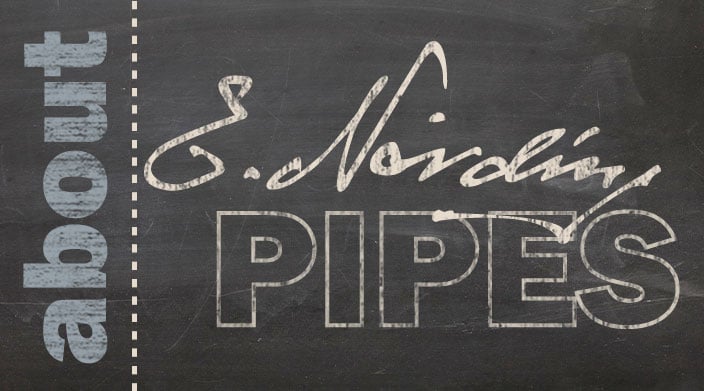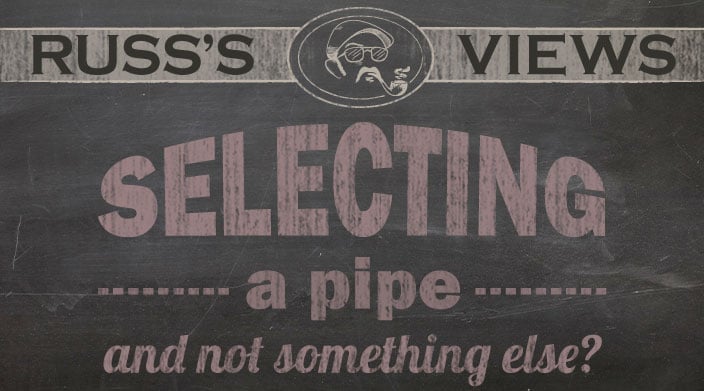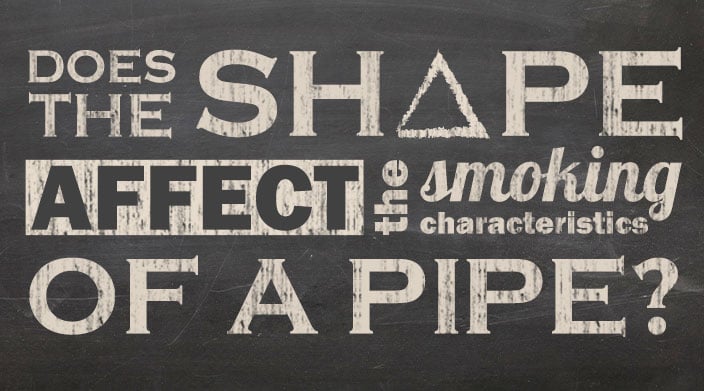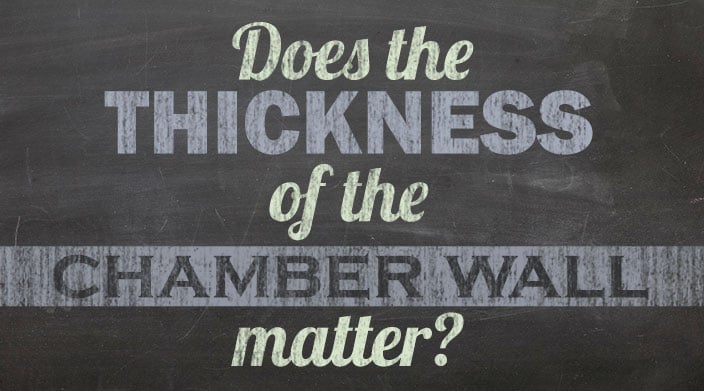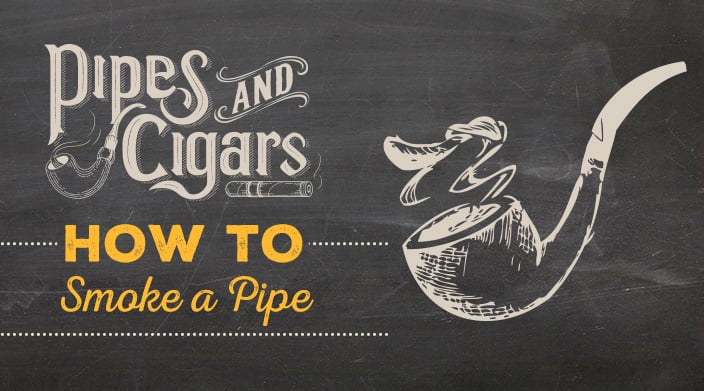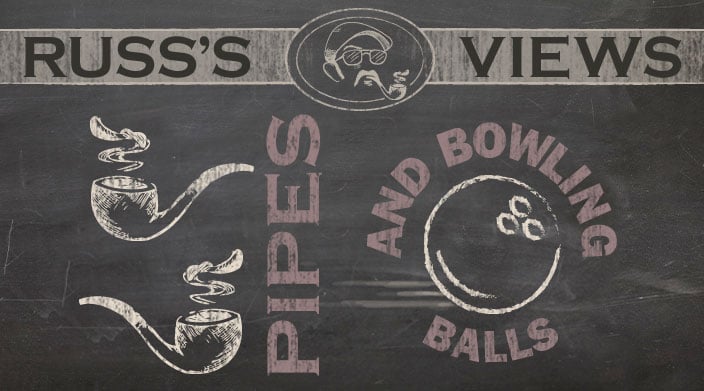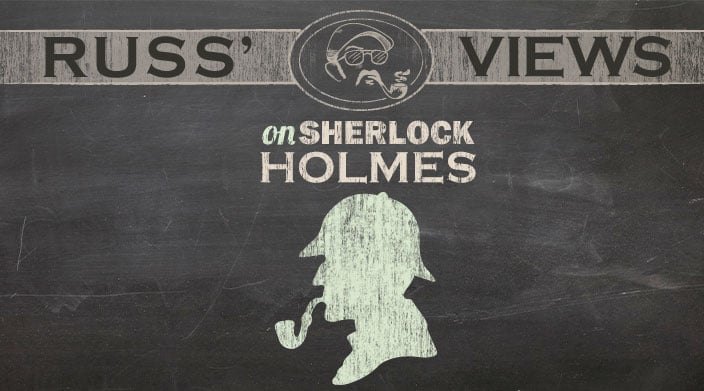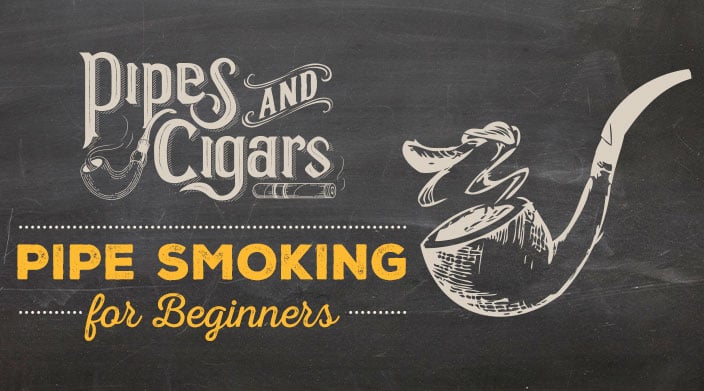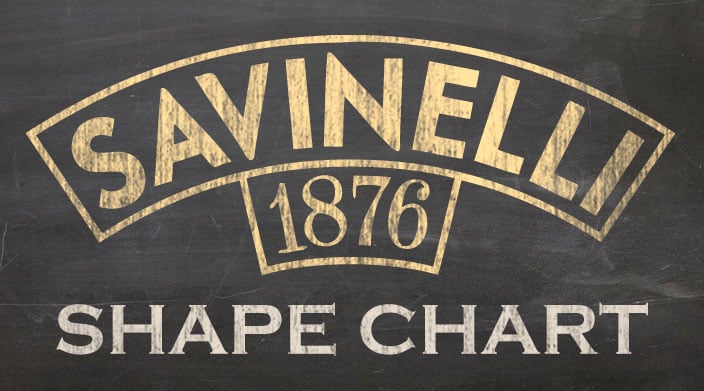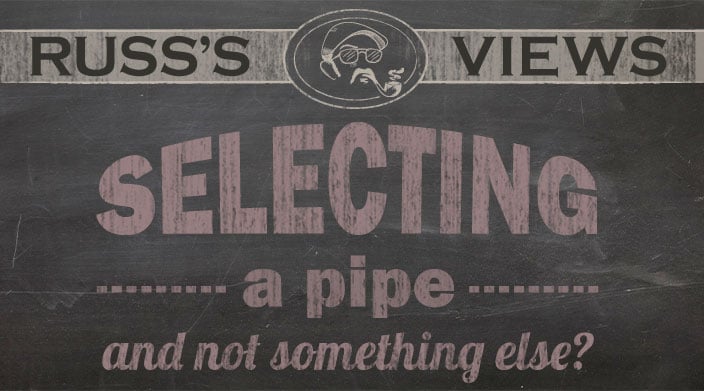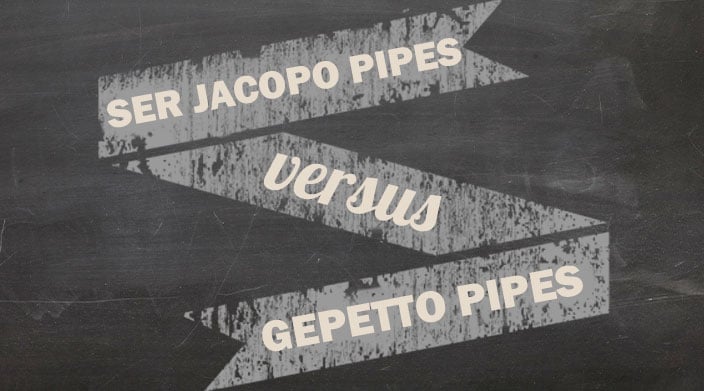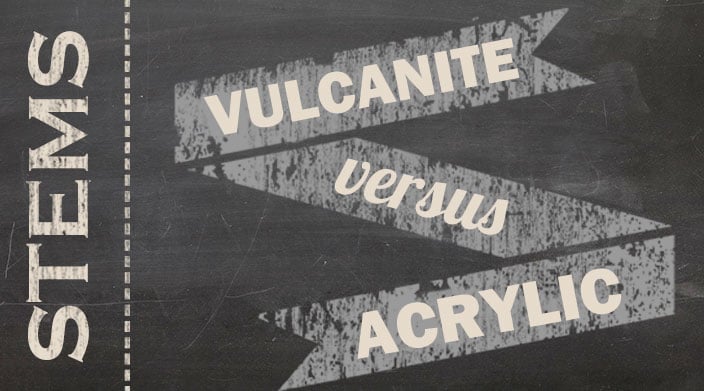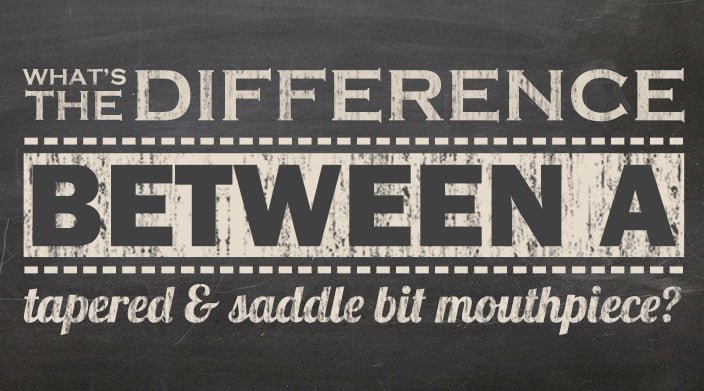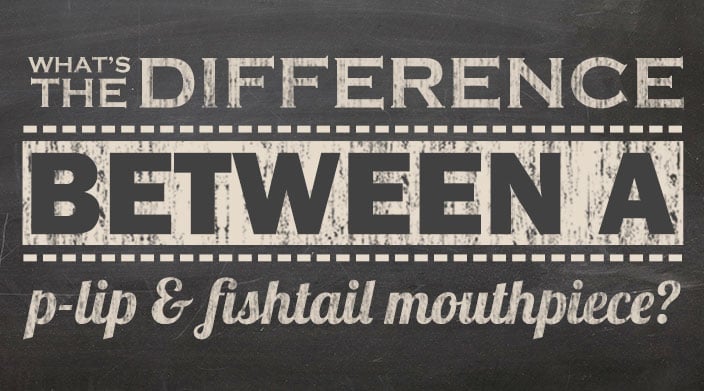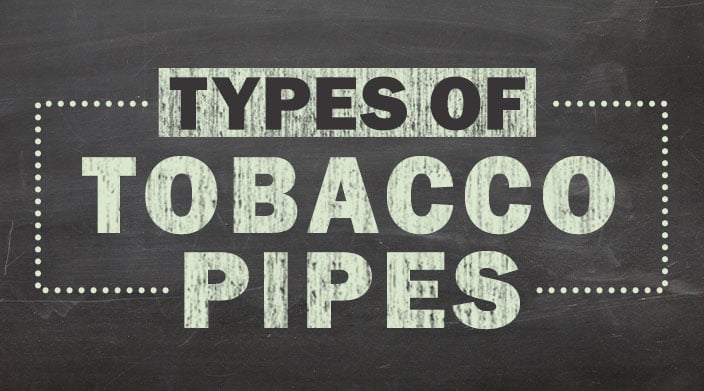This article was the first R. David Field published for Pipe Smoker- in the Fall 1983 issue. You can check out more info on dating Dunhill Pipes and many other interesting articles and information at www.rdfieldcom
THE DUNHILL PIPE: A COMPARISON OF THEN AND NOW
We are pleased to introduce R.D. "David" Field as a new Associate Editor. David was recommended by Ben Rapaport who sent us the following article which Mr. Field had written last year. David is employed by the city of Philadelphia as a social worker. He is regarded as an expert on Dunhill Pipes and is also knowledgeable on Castellos and other brands. At forty-one· years old, David has been a pipe smoker for many years and has dealt extensively in pre-smoked collectibles. he has had articles printed abroad ("Amici della Pipa" and "Smoking") and should be welcome to the staff of PIPE SMOKER.
As a pipe collector, a pipe hobbyist, and as a Dunhill principal pipe dealer, 1 hear comments over and over again about the comparative merits of the older pipes versus the newer models. Most discussion centers on the quality of the briar and the sweetness of the smoke. 1 hear comments such as "1 love my old Dunhill pipes, but these new ones ... 1 don't know."
People I consider to be very knowledgeable on the subject of 20th Century briar swear that, by far, the sweetest smoke comes from those Dunhill pipes bearing a patent number (pre-1955); they will not even smoke those made after 1968, believed to be of substandard quality.
The used pipe trade has followed the same trend - patent number Dunhills are commanding a higher price than those made from 1955-1968, and a still higher price than those made after 1968.
Due to the mystique surrounding the older Dunhill pipe, there is, indeed, a need to explore any factual basis behind the "myth". This, reader, is the purpose of this article.
Let's look at a bit of history behind the Dunhill pipe - from its inception to present day production. Alfred Dunhill was a rather inventive fellow, having taken a harness making concern into the automobile age by turning it to the manufacturer of auto accessories, and then operating as a "patent consultant". When he opened a tobacconist shop in 1907, he knew nothing beyond the ordinary of pipes, tobacco, and the art of blending. His curious mind prompted him to listen to his customers' wants and then to try different methods to satisfy those wants. By early 1910, Dunhill was ready to offer his own make of pipe as an alternative to those coming from France that were highly varnished and so clogged the pores of the briar. These first pipes were of two distinct internal designs: one followed the French design that is the standard non-filter design of today; the other, the "absorbal" pipe, used a circular cellulose filter that was pushed into the hollowed-out body of the pipe shank. It is interesting to note here that these first Dunhill pipes and all Dunhill pipes made through 1919 had French-turned bowls that were then finished in London by the Dunhill firm.
In 1912, Dunhill invented and patented the "inner tube", an aluminum insert designed to keep the pipe "innards" clean; in 1915, the "white spot" appeared to help the customer know which side of the hand-cut vulcanite stem should be uppermost; 1917 saw the introduction of the first Dunhill sandblast - the "shell".
In producing the "shell", Dunhill used only Algerian briar, then in great abundance, because it had a softer character than the Italian briar used in the smooth "bruyere" finish. This soft character, in combination with the heat derived from Dunhill's unique oil curing process, led to an unusually deep and craggy sandblasted pipe. In the early years of production, Dunhill would not even stamp shape numbers on his "shell" pipes, since the shape of identically turned bowls varied so after curing and sandblasting.
Dunhill's "root briar" was introduced in 1930 (by this time, Alfred Dunhill was two years into retirement and his brother Herbert had charge of the business) and the light brown finish proved highly popular in America, less so in Europe. Next, some twenty three years later, came the "tanshell" a sandblasted Sardinian briar with a tan or brown finish. It took twenty-six more years before another finish - the "cumberland" - appeared. The cumberland is also sandblasted, has a dark brown finish, a smooth beveled top, and a bi-color vulcanite stem (this same stem first appeared in 1930 on the root briar).
As I mentioned previously, no Dunhill pipe was completely fashioned in England until 1920 when a bowl-turning section was opened in the London factory. Before this time "turned" but unfinished pipe bowls were imported from France and then finished, oil-cured and, in the case of "shells", sandblasted in London.
The briar situation must be investigated in order to compare the new Dunhill pipe with the old there have been changes. Originally, Italian briar had been used for the "bruyere" and "root", Algerian for the "shell", and Sardinian for the "tanshell". The age of the briar used, averaged between 60 and 100 years. In the 1960's, the briar situation changed drastically. The Algerian supply slowed to a trickle, and the Italian government declared that its briar could only be used by pipe makers within its borders. To that time, Dunhill had a virtual monopoly on briar supply; now it had to search for new sources and could no longer reserve one type of briar for one pipe finish.
This change was readily apparent in the "shell" finish. Deprived of Algerian briar, Dunhill had to use Grecian briar, a harder variety, and so the "shell" pipe now received a more shallow sandblast. As well, the wood was less aged between 50 and 80 years. Additionally, the briar burls were smaller and had more flaws, so there were less perfect bowls being turned, and - more waste! Conversely, the new briar was harder, lighter, and had much better grain than the old. Dunhill was never known for beautiful grain patterns in its smooth-finished pipes, but those produced today are outstanding when compared with those of twenty years ago. In the manufacture of a quality pipe, much attention is paid to making and fitting the stem, or mouthpiece. Injection-molding methods are not used here; instead, each mouthpiece is hand-cut from sheet or rod vulcanite; the tenon is hand-cut and hand shaped to the correct circumference; and the mouthpiece is then hand-fitted to the pipe. The original Dunhill mouthpiece had quite a thick lip that I personally find quite uncomfortable. The "comfy" mouthpiece, with a thinner and wider lip, was developed in the 1920's, and the "F/T" (fishtail) mouthpiece was designed in the 1930's. In 1976, faced with rising labor costs, the firm used a mouthpiece-cutting machine. The machined mouthpieces had a very thick lip (much like the pre "comfy" lip); complaints poured in and the machine was scrapped. Present-day mouthpieces have a lip thickness somewhere between the "comfy" and the "F/T".
I have visited the Dunhill pipe factory three times in the past two years and on each visit, I have had the opportunity not only to view every facet of pipe production, but also to converse with those in charge of production. During my visit in December 1980, I had a long conversation with David Webb, factory manager. Mr. Webb has been with Dunhill for the past five years, has been factory manager since late 1979, and is very knowledgeable. I had brought my personal collection of thirteen unsmoked Dunhills dating from 19201927 - nine bruyeres and four shells and three 1920 vintage "shells" that I smoke. As Mr. Webb looked them over, he laughed: "If these shell briars came out of production today, half of them would land in the reject bin."
Stunned, I asked: "Why?"
"In the case of the billiard, that's a very deep sandblast in spots, taking away about half the wall thickness; and the shank is out of line. The mouthpiece on the smaller billiard is much too thick where it meets the shank and would have to be cut down. The Prince is totally off-shape on one side of the bowl."
I protested, stating that these were the very reasons for their great character.
"Yes, they do add character. And, to my mind, they are beautiful pipes. We can make them like this but ..." and he went on to explain that because Dunhill sells to a worldwide market, the firm tends to get pushed and pulled in different directions at the same time. On the Continent and in the Far East, there is no demand for deeply-shelled pipes; furthermore, these will often be returned to the factory as "not of Dunhill quality".
An associate of David Webb, Bill Taylor, told me of the time he was working in quality control at the factory. Richard Dunhill came by and picked up one of the "shells" Bill rejected.
"Why is this in the reject bin?"
"Because the sandblast is too deep and uneven."
"This pipe has character. Send it to America. Americans know good pipes!"
The Dunhill pipe has always been synonymous with the word quality in pipe making. Much of this value judgment, I feel, has to do with the firm's unique "oil curing" process invented by Alfred Dunhill. This process, in my estimation, does three things - it makes the tobacco taste unusually "nutty"; it has a very low rate of bowl "burn-out" compared with other makes; and, it helps the pipe to smoke well even after many years. This process is still very closely guarded by the firm and is not normally shown to visitors. I was shown the process because I brought a copy of the original patent with me and specifically raised the issue.
In order to discern quality in a pipe, one has to look at only a few things (of course much of the real judgment is in the smoking): the turned and bored bowl; the shank bore; the tenon/ferrule connection; the lip of the mouthpiece; the look and feel of the finish. Dunhill, I submit, has as high a standard of quality as it has ever had. This does not mean that every Dunhill released for sale, today, is a perfect pipe, for some are not! What it does mean is that the percentage of imperfect Dunhills is no greater today than, say, 1924. I have discovered two imperfect pipes in my 1920-1927 collection.
According to David Webb, the Dunhill pipe did have a problem in the mid-1970's, not so much with quality as with the outward signs of quality. Those in charge of policy at the time decided that the "shell" must be totally black and shiny - a blue-black stain was used, eliminating any reddish highlights. At the same time, the "bruyere" finish was lightened from its original plum color. These two changes have dampened the pipe's reputation and may be the cause for some criticism I have heard; but, even with these pipes, the underlying quality is still there. Since that time, of course, there has been a return to the original "bruyere" finish, and the new "deep shell" has reached our shores in limited quantity.
In comparing the Dunhill pipe of yesterday with that of today, what stands out is the continual evolvement of the pipe: The original mouthpiece has changed to "comfy" to "FAT", to machine-made, and then to present-day standard - gaining and losing lip thickness with each change. The briar has changed - age and the custom of reserving one type of briar for one finish have given way to gains in hardness, lightness, and better grain pattern. The sandblasted "shell" has changed - losing a very deep blast and gaining uniformity; then, regaining its deep, if more uniform blast.
With these changes, the Dunhill standard of excellence has not diminished, at least in my practiced eye. Today's Dunhill pipe is not worse than yesterday's; it is not better than yesterday's; it is . . . different than yesterday's!
EDITOR'S NOTE: After discussing this article with David Field, we learned that there will be a sequel which will discuss in detail, the identification of Dunhill pipes. This will include an analysis of the nomenclature which enables the knowledgeable collector to know Dunhills. This article will appear in a future edition of PIPE SMOKER.







